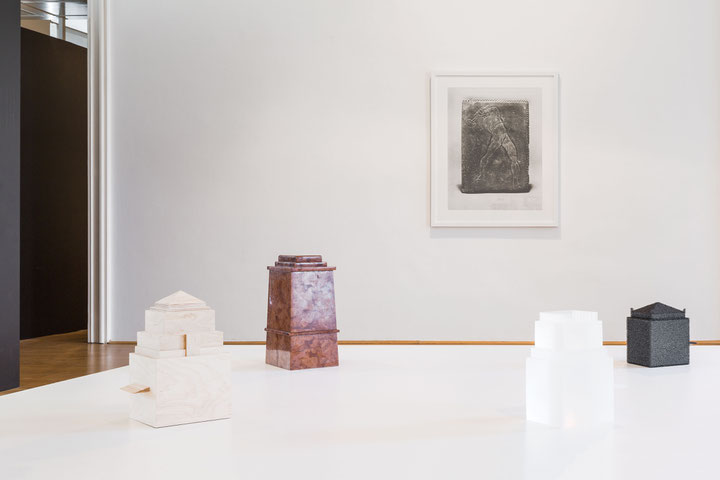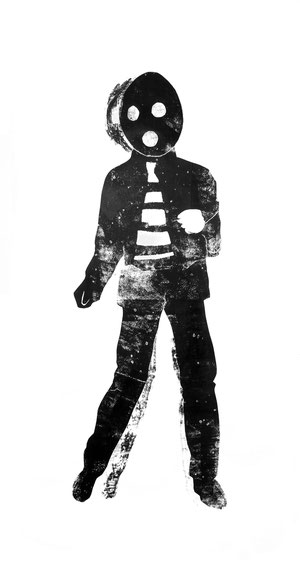Issue 4/2018 - #Fortschritt
From the Past’s Future to the Present
Dreaming of an Enlightened Society
In 1770, at the onset of the French Revolution, Louis-Sébastien Mercier’s futuristic novel titled "L’An Deux Mille Quatre Cent Quarante: Rêve s’il en fût jamais" [The year two thousand four hundred forty: A dream if it ever was], a blue print for humanity’s progress that also predicted the revolution to come, was published. 2440 might have seemed so distant in the future in the late 18th century, that 60 years did not really count, and the English translator rounded up the number to 2500 for the English edition.1 As it came out after the revolution, the translator might have felt free to use the word “memoir” instead of “dream.” The book was considered the first of its kind, a temporal utopia, that is, a utopia of the future, the function of which was to change, reform or revolutionize the world.2
In Mercier’s vision an enlightenment dream came true; “men of letters become the most respectable of citizens.”3 In his world every citizen was a writer, and the elite of merit was the new sovereign. According to Reinhart Koselleck, “Mercier’s utopia of the future is a variant of the philosophy of progress; its theoretical foundation is the temporalization of the perfectio ideal … the author is first of all no historian or chronicler but foremost the producer of the coming time, executor of its aptitude for perfection.”4
Ádám Albert, a Hungarian artist and also a learned historian looks back from the future to the 1919 Hungarian Soviet Revolution, at the onset of its centennial anniversary in his solo show held in a small, secluded but advanced institution, the Kassák Museum. It was part of the museum’s research and exhibition program Lifestyle and Social Movements of Modernism. The exhibition titled "Everything is ours!"5, focuses on just one day of the 133 day long proletarian dictatorship: the May 1st celebration, with the assembly of monumental structures and artworks, that laid claim to the visual representation of a new world. The starting point of the research-based project is what Walter Benjamin had claimed in his Arcades Project, that history breaks down into images, not in stories. When the curator, Judit Csatlós, and the artist went after the agenda, descriptions, choreography or models of the decoration of the capital, Budapest, they hardly found any documents, but they did find lots of photographs. These photographs served as referential points to the objects made by the artist. The pieces reflect on symbolic acts related to the production of goods and services and their (re-)distribution, for example allowing to use the bridges and the city park free of charge for everybody as the overture of the new, more just society.
The decorated bridgeheads are remade from different materials; plywood is to evoke the cheap materials used for the decoration back in time; lime-stone was the favorite material of existing socialism in remembering the worker’s movement; plexiglass refers to transparency, slogan of the revolutionary time, while the polyurethane foam induces the blurry, formless nature of the turbulent events. These objects are immaculate, sterile, imagined models for the decoration of the grandiose celebration. They appear as archeological finds or visual signs looking back from the far future, which is unable to reconstruct the raging events, the motivations behind, the violence and controversies cleansed off by the passing time.
Russian revolutionary art, now celebrated, collected by and exhibited in the leading museums, originally aimed to create a new visual language down to its basic elements, as radically revolutionary and detached from the old world as the political revolution was. Artists considered themselves to be on equal footing with the political leaders in creating the new world. Thus, abstraction was not born out of the race of styles (or at least was not intended to do so) but rather out of the dilemma that visuality of the proletariat could not be based on the artistic language of the bourgeois art. This is behind the slogan of “death to the easel painting”, as artists wanted to serve the revolution and participate in the creation of the breed of new human and new world. Thus, instead of working in their isolated studio, they travelled by “agit trains” to inform the illiterate peasantry of the back country with the help of visuality through revolutionary posters, drawings and decorations, and participated in creating a new material culture.
In the course of musealization, the artefacts of the Russian avant-garde went through a purification process, losing all their political intentions and connections, appreciated in the present as “sacred and pure art” above politics and everyday life. Through this lens is the revolutionary decoration of May 1st 1919 evoked by the objects of Albert. They make us aware of the mechanism of art history and also make palpable how history works in an obligatory distant manner; in accordance with Koselleck’s claim, that “every historical account is a construction in discourse of past reality rather than simply a translation of the facts.”6
Following Mercier’s revolutionary dream, in 2440/2500 censorship is not eliminated, which means that only morally noble people’s works are published. All those, who “wrote a bad book … [with] dangerous principles such as are inconsistent with found morality” must wear a mask “to hide his shame, till he has effaced it by writing something more rational and beneficial to society.”7 The logic of violence of reason, which destroys all other violence, according to Koselleck, is the drive that leads to the future.8
Imre Gábor’s life-sized black and white paper prints made by trampling on them, are dystopic evocations of what has remained from the visual culture of the present for the future, be they masterpieces of high art, or iconic images of popular culture – Picasso, Muhammed Ali, Elvis Presley, figures of press photos etc. artworks, as the Red-hammer-wielding man, made by Mihály Bíró, the person in charge of the decoration. (His giant worker figure became the symbol of the revolution. Actually, the photograph of his wallet with the same figure was also exhibited at Albert’s exhibition.) All figures are wearing masks which, along with the equal size, black color and skeletal character, contribute to their uniformization and make them a frightening army of ghosts of the culture of the past. Once the genre of the paper cut out, silhouette portraits “democratized portraiture long before the advent of photography”.9 In their contemporary art mutations, however, no clue is given as to whether the figures are foreseeing the future and are wearing gasmasks in order to survive a catastrophe to come or whether they have already burnt into ashes resembling the figures once landmarks of the so-called civilization, that ever to be justified colonization and slavery. The black cut outs in this context functioned as cataloguing human property; so, details were avoided and the environment was not specified. Biographical specificities were added to only white slave owners. The late relatives of the “black outs” might be read as gratifications taken on the products of civilization, producing an unjust world in the name of progress. Alternatively, they are out for revenge, as in the imagination of Mercier, who saw “on a magnificent pedestal, the figure of a negro … at his feet … these words: To the Avenger of the New World.”10
The two artistic projects are the opposites of each other, diverse interpretations of the present seen from the future. One is lacking any human beings or feelings, while avoiding any judgment, taking sides or politicizing in an overtly politicized time. The other contains exclusively human figures, real or created, and is full of eruptive emotions; disturbed and disturbing. One is polished and delicate, the other is raw and coarse; one is balanced and artistic, the other is full of devastation. However, both of them, even if unintentionally, diagnose the present from the perspective of the future.
Mercier’s book was condemned by the Holy See in 1773 and by the Spanish Inquisition in 1778,11 while the Kassák Museum, its director, its curator, the authors of the catalog and the artist was personally harassed, politically attacked and denounced in an extreme right-wing forum12 despite their neutrality, distanced scholarly attitude and analytic nature. The attack was part of the systematic attack on the last bastions of liberal culture, that was launched by the dictatorial curbing of the independence of the Academy of Sciences.13
Mercier wished for perfection and progress as compensation for the reality of his time. Today, however, his prophecy needs to be read conversely: what his generation suffered from (and was hoping that it would be eradicated in the future), namely tyranny, once again is a reality. “In my time … men in power feared nothing so much as the pen of an able writer; their souls, proud and guilty, trembled in their inmost recesses, when equity boldly plucked off the veil that covered their shame.”14 Concerning the academy, he imagines the future as such: “the number of our academicians is not fixed; every talent receives the crown of its reward; there are sufficient to recompense them all”15 proved to be wishful thinking, as for now it works the other way around. His dream of an enlightened society based on reason, morality and merit could not be further from the truth in 2018.
[1] Louis-Sébastien Mercier, Memoirs of the year Two Thousand Five Hundred. Translated from French by W. Hooper, M.A. Philadelphia: Thomas Dobson, MDCCXCV [1795].
[2] Cf. Reinhart Koselleck, The Practice of Conceptual History: Timing History, Spacing Concepts. Stanford: Stanford University Press, 2002, 86.
[3] Mercier, op. cit., 194.
[4] Koselleck, op. cit., 90.
[5] The title "Everything is ours!" is a reference to the closing lines of rebellious Hungarian poet Endre Ady’s Hungarian Jacobin Song. When Budapest’s Margaret Island opened its gates to the public in April 1919 – a few weeks before, it had still been a restricted park exclusively reserved for the bourgeois elite – the same quote was put on display to welcome visitors.
[6] Koselleck, op. cit., XIII.
[7] Mercier, op. cit., 44.
[8] Koselleck, op. cit., 91.
[9] Black Out: Silhouettes Then and Now. Smithsonian National Portrait Gallery, Washington D.C, May 11, 2018 – March 10, 2019; http://npg.si.edu/exhibition/black-out-silhouettes-then-and-now
[10] Mercier, op.cit., 127.
[11] Laure Marcellesi, Louis-Sébastien Mercier: Prophet, Abolitionist, Colonialist, http://www.dartmouth.edu/~laurewik/publications/2011-studies/mercier.pdf
[12] Eva S. Balogh, An attack on academic freedom with government assistance, http://hungarianspectrum.org/2018/08/02/an-attack-on-academic-freedom-with-government-assistance/
[13] Eva S. Balogh, Viktor Orbán sets out to destroy “the last stubborn fortress of left-liberal ideology, http://hungarianspectrum.org/2018/06/16/viktor-orban-sets-out-to-destroy-the-last-stubborn-fortress-of-left-liberal-ideology/
[14] Mercier, op. cit., 46.
[15] Mercier, op. cit., 198.



